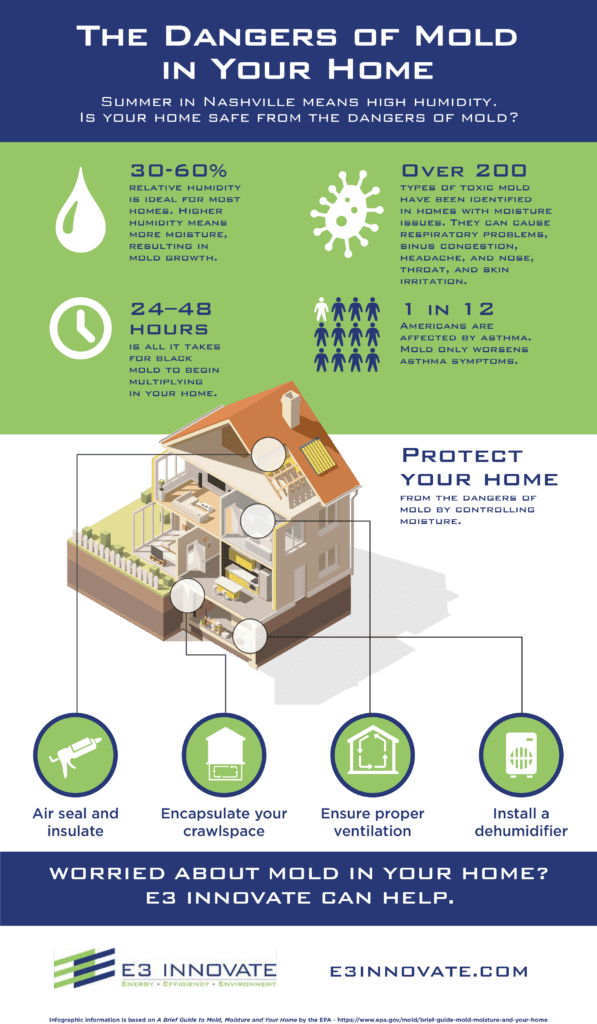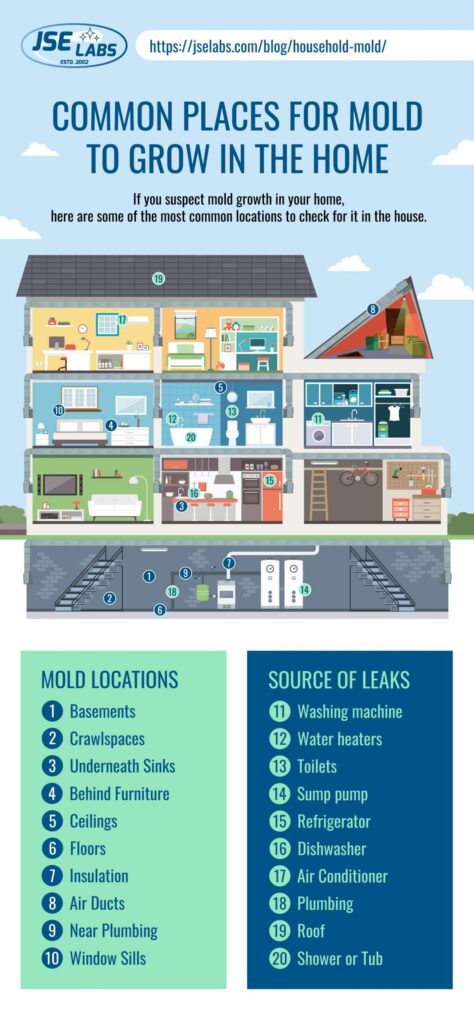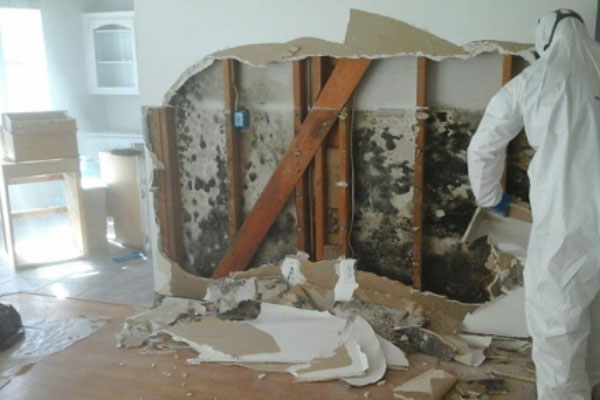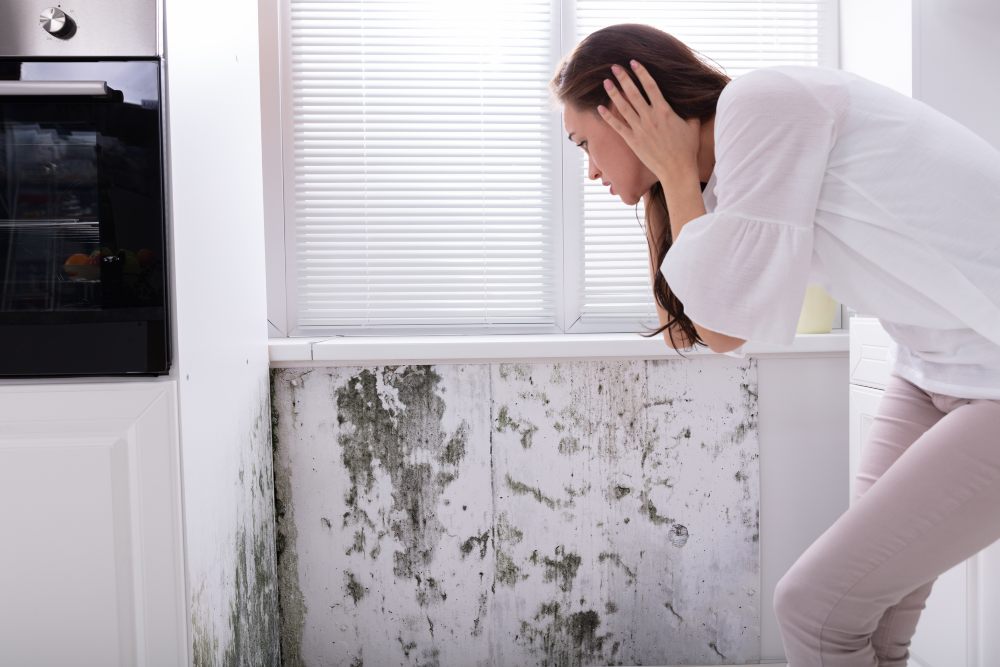In this article, we will discuss the dangers of ignoring mold growth in Garland homes. You will learn about the potential health risks associated with mold exposure and how it can affect your respiratory system. We will also explore the structural damage that mold can cause to your home and the financial implications of neglecting the problem. By the end of this article, you will understand the importance of addressing mold growth promptly and taking the necessary steps to prevent its recurrence.

Understanding Mold Growth
Mold growth can be a serious problem in homes, leading to various health risks, property damage, and compromised indoor air quality. It is essential to understand the causes, common areas, and conditions favorable for mold growth to effectively address and prevent this issue.
Causes of Mold Growth
Mold thrives in environments with excess moisture and organic materials to feed on. Common causes of mold growth in homes include:
-
Leaks and water damage: Water leaks from pipes, roofs, or windows can create the perfect breeding ground for mold. If the water damage is not properly addressed, it can lead to mold growth.
-
Poor ventilation: Insufficient airflow can trap moisture indoors, especially in bathrooms, basements, and kitchens. Lack of ventilation allows humidity to build up, contributing to mold growth.
-
Flooding and high humidity: Garland, like many regions, can experience periods of heavy rainfall or storms. Flooding and high humidity levels increase the likelihood of mold growth.
Common Areas for Mold Growth in Homes
Mold can grow in various areas of a home. Some of the most susceptible places include:
-
Bathrooms: Frequent use of water and inadequate ventilation make bathrooms prone to mold growth. Mold can often be found on shower walls, tiles, and grout lines.
-
Basements and crawl spaces: These areas tend to have higher humidity levels and poor ventilation, making them ideal breeding grounds for mold.
-
Kitchens: Spills, leaks, and high humidity from cooking can contribute to mold growth in kitchen areas, particularly under sinks and around appliances.
-
Attics and roofs: Leaks and inadequate insulation can result in moisture buildup, leading to mold growth in attics and on the underside of roofs.
Conditions Favorable for Mold Growth
Mold requires specific conditions to grow and thrive. Understanding these conditions can help homeowners prevent mold growth. Some of the favorable conditions include:
-
Moisture: Mold requires moisture to grow, so any area with excessive humidity or water infiltration is at risk. This can be caused by leaks, flooding, or high humidity levels.
-
Darkness: Mold prefers dark environments, making hidden areas such as behind walls or under carpets potential breeding grounds.
-
Lack of airflow: Poor ventilation prevents moisture from evaporating, creating an environment conducive to mold growth.
Health Risks Associated with Mold
Ignoring mold growth in your Garland home can have serious consequences on your health. Mold can cause a range of health issues, particularly for individuals with respiratory problems, allergies, or weakened immune systems.
Respiratory Problems
Exposure to mold can trigger respiratory problems, leading to coughing, wheezing, and shortness of breath. Mold spores can irritate the lungs and cause inflammation, exacerbating conditions such as asthma and bronchitis.
Allergic Reactions
Many people are allergic to mold, and repeated exposure can lead to allergic reactions. Symptoms may include sneezing, itchy eyes, runny nose, and skin rashes. Some individuals may also experience more severe reactions, such as hives or difficulty breathing.
Aggravation of Existing Conditions
Individuals with existing respiratory conditions or compromised immune systems are particularly susceptible to the health risks associated with mold. For example, people with allergies or asthma may experience more frequent and severe attacks when exposed to mold.
Property Damage
Aside from health risks, mold growth can also cause significant damage to your property. Ignoring mold growth can lead to:
Structural Damage
If mold is left unchecked, it can deteriorate building materials such as drywall, wood, and insulation. Over time, this can weaken the structure of your home, potentially leading to costly repairs.
Damage to Belongings and Furniture
Mold can also cause irreversible damage to your personal belongings, including furniture, clothing, and electronic devices. Mold can stain fabrics, rot wooden furniture, and even render electronic equipment unusable.
Compromised Insulation and Energy Efficiency
Mold growth can compromise the effectiveness of insulation in walls, attics, and basements. As a result, your home may lose heat or cool air more rapidly, leading to higher energy consumption and increased utility bills.
Impact on Indoor Air Quality
Ignoring mold growth in your Garland home can have a detrimental impact on indoor air quality. Mold can negatively affect the air you breathe, leading to various issues.
Increased Levels of Allergens and Toxins
Mold releases allergens and toxins into the air. These can cause respiratory problems, allergic reactions, and even contribute to chronic conditions such as asthma. The more mold present, the higher the concentration of these harmful substances in the air.
Unpleasant Odors
Mold growth often produces a musty odor that can permeate your home. This odor is not only unpleasant but also indicates the presence of mold and potential health risks.
Difficulties in Maintaining a Healthy Environment
Mold growth can make it challenging to maintain a healthy environment in your home. The presence of mold spores in the air can continuously trigger allergic reactions and worsen respiratory conditions, making it difficult to find relief even inside your home.

Spread of Mold
Ignoring mold growth can result in its spread throughout your Garland home. Mold can easily transmit and contaminate other areas without proper remediation.
Airborne Transmission
Mold spores can become airborne and spread to different parts of the home through air currents or ventilation systems. This allows mold to reach areas that were previously unaffected.
Mold Spore Dissemination
Mold spores are microscopic and can be easily transported by people, pets, or even airflow. Once spores settle in a new area with suitable conditions, mold can begin to grow and spread.
Cross-Contamination to Unaffected Areas
Mold can also cross-contaminate unaffected areas if proper precautions are not taken during remediation. Spores can be easily carried on clothing, shoes, or cleaning equipment, leading to new mold growth.
Legal and Financial Consequences
Ignoring mold growth in your Garland home can have legal and financial repercussions. Failing to address mold issues can result in:
Violation of Health and Safety Regulations
Mold growth in homes can violate health and safety regulations, especially if it poses a threat to the well-being of occupants. This can result in fines, penalties, or even condemnation of the property until the issue is resolved.
Decreased Property Value
A home with a history of mold problems is likely to have its value decreased significantly. Potential buyers may be deterred from purchasing a property with a mold issue, resulting in diminished market value.
Legal Liabilities and Potential Lawsuits
If the mold issue in your home causes harm to individuals or their belongings, you may be held legally liable. This can result in expensive lawsuits and potential legal ramifications.

Health Effects on Vulnerable Individuals
Certain individuals are more susceptible to the health effects of mold. Ignoring mold growth can be especially dangerous for:
Infants, Children, and Elderly
Vulnerable populations, such as infants, children, and the elderly, are more susceptible to the health risks associated with mold. Their developing or weakened immune systems may not be able to effectively combat mold-related illnesses.
People with Weakened Immune Systems
Individuals with compromised immune systems, such as those undergoing chemotherapy or with chronic illnesses, are at higher risk of mold-related infections. Mold can cause severe respiratory infections, which can be life-threatening for these individuals.
Higher Susceptibility to Mold-Related Illnesses
Some people are genetically predisposed to mold allergies or have a higher sensitivity to mold. These individuals experience more severe symptoms and are more likely to develop mold-related illnesses even with minimal exposure.
Difficulty in Mold Remediation
Ignoring mold growth can make remediation a costly and time-consuming process. Mold removal is not a simple task and can present several challenges.
Costly and Time-Consuming Process
Mold remediation requires specialized equipment, materials, and expertise. Hiring professional mold removal services can be expensive, especially if the mold infestation is extensive or has spread to multiple areas of your home.
Challenges in Identifying and Eliminating All Mold Sources
Mold can grow in hidden areas, such as within walls or underneath flooring, making it difficult to identify all sources of mold growth. Failure to eliminate all sources can result in incomplete remediation and the potential for mold recurrence.
Risk of Incomplete Removal and Recurrence
If mold is not thoroughly removed, it can quickly return and continue to cause damage to your property and health. Without addressing the underlying causes of mold growth, such as water leaks or inadequate ventilation, the problem will persist.

Importance of Professional Mold Inspection
To effectively address mold growth in your Garland home, it is crucial to seek the help of professional mold inspection services. They can provide:
Thorough Assessment of Mold Presence
A professional mold inspector will conduct a comprehensive assessment to determine the extent of mold growth in your home. They can identify hidden mold sources and assess the impact on your property and health.
Identification of Underlying Causes
A mold inspection will also help identify the underlying causes of mold growth in your home. This can include water leaks, poor ventilation, or other moisture-related issues. By addressing these causes, you can prevent future mold growth.
Proper Mitigation and Prevention Strategies
Professional mold inspectors will provide recommendations for effective mold mitigation and prevention. They can guide you on proper remediation techniques, such as removal of affected materials, proper drying, and implementing measures to prevent future mold growth.
Conclusion
Ignoring mold growth in your Garland home can lead to serious consequences for both your health and property. Understanding the dangers associated with mold growth is vital, as it allows you to take immediate action and protect yourself, your loved ones, and your investment.
By recognizing the causes, common areas, and conditions favorable for mold growth, you can proactively address and prevent this issue. Taking the necessary steps, such as seeking professional mold inspection services, not only helps eliminate the existing mold but also prevents its recurrence.
Remember, mold growth is a serious matter that requires immediate attention. Don’t ignore the dangers of mold. Act swiftly to ensure the health and safety of your home and family.
